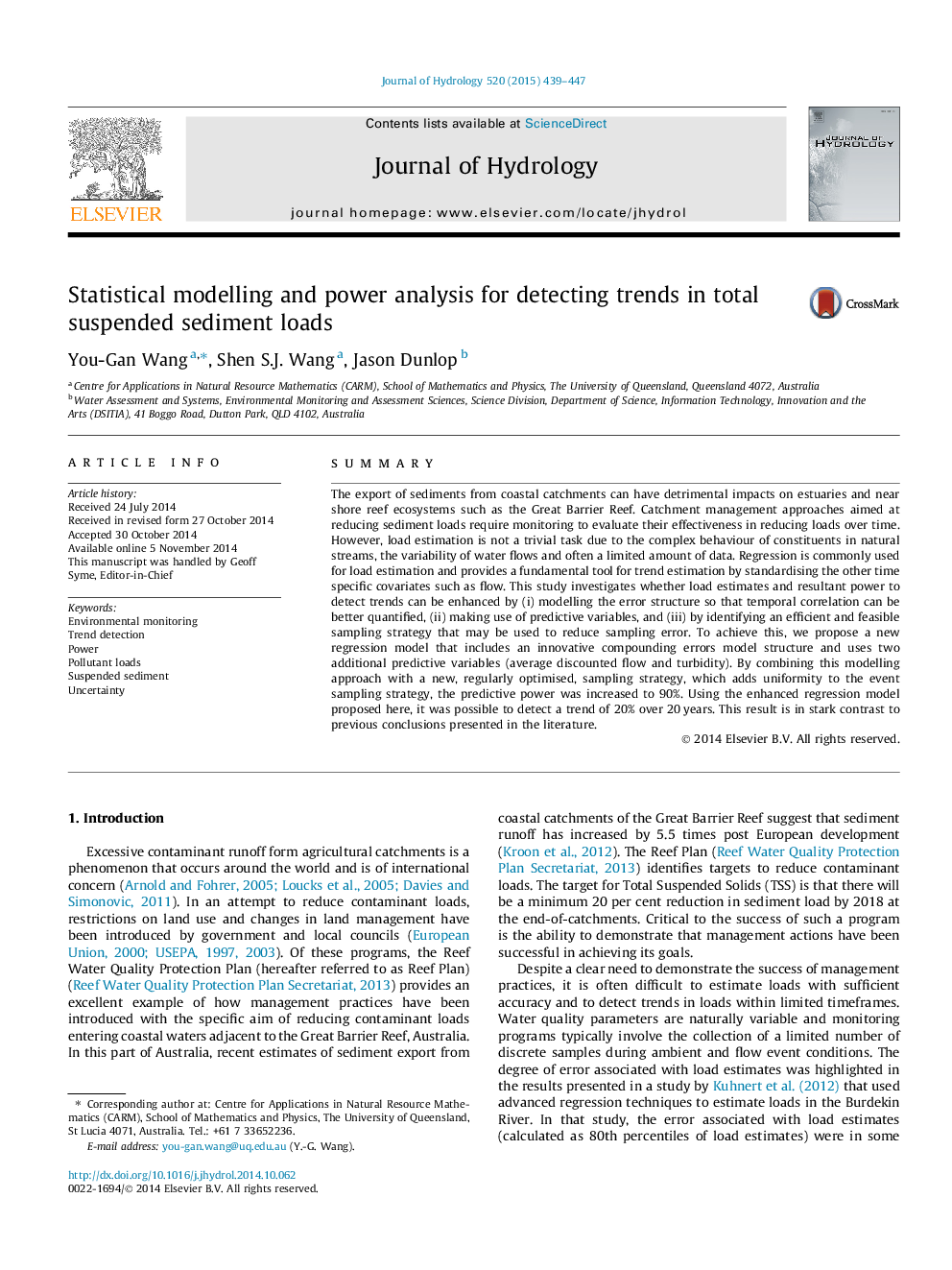| Article ID | Journal | Published Year | Pages | File Type |
|---|---|---|---|---|
| 6411890 | Journal of Hydrology | 2015 | 9 Pages |
â¢Established a new statistical model for trend detection and load estimation.â¢Demonstrated using 3 analyses that power of trend detection is substantially improved.â¢This research shows that it is possible to detect a trend of 20% over 20 years.
SummaryThe export of sediments from coastal catchments can have detrimental impacts on estuaries and near shore reef ecosystems such as the Great Barrier Reef. Catchment management approaches aimed at reducing sediment loads require monitoring to evaluate their effectiveness in reducing loads over time. However, load estimation is not a trivial task due to the complex behaviour of constituents in natural streams, the variability of water flows and often a limited amount of data. Regression is commonly used for load estimation and provides a fundamental tool for trend estimation by standardising the other time specific covariates such as flow. This study investigates whether load estimates and resultant power to detect trends can be enhanced by (i) modelling the error structure so that temporal correlation can be better quantified, (ii) making use of predictive variables, and (iii) by identifying an efficient and feasible sampling strategy that may be used to reduce sampling error. To achieve this, we propose a new regression model that includes an innovative compounding errors model structure and uses two additional predictive variables (average discounted flow and turbidity). By combining this modelling approach with a new, regularly optimised, sampling strategy, which adds uniformity to the event sampling strategy, the predictive power was increased to 90%. Using the enhanced regression model proposed here, it was possible to detect a trend of 20% over 20Â years. This result is in stark contrast to previous conclusions presented in the literature.
